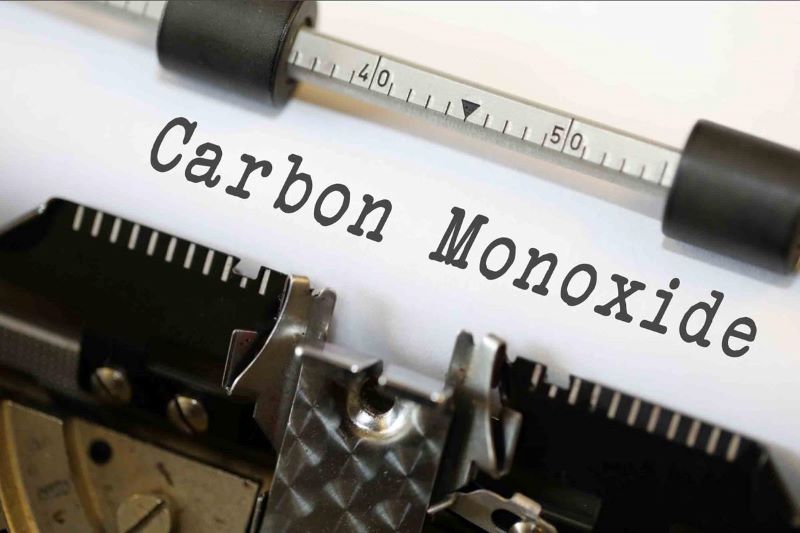Table of Contents
What is Carbon Monoxide?
Carbon monoxide or CO is an odorless, colorless, tasteless gas and isn’t as dense as air. Its properties make it highly dangerous and are toxic to humans in excessive quantities.
It is created when carbon and oxygen combine and form two gases. When the combustion of carbon is complete, i.e.there is air present, what is produced is mostly carbon dioxide or CO2. However, when the combustion of air isn’t complete, i.e limited air, only 50% of the oxygen adds to the carbon, forming carbon monoxide or CO
The accumulation of carbon monoxide in the home normally relates to the number of people within the house, and gas levels are generally highest where the occupants spend the majority of their time.
If appliances are in perfectly good working order, very little CO is produced. However, appliances that don’t work properly or don’t have the correct ventilation could produce higher or even fatal levels of CO within the home.
Be aware also that using charcoal grills or kerosene heaters in the house, or even having your car running in an attached garage, could produce levels of CO to rise high enough to result in CO poisoning.
Appliances you are likely to find CO in are:
- Wood burning stoves
- Charcoal grills
- Furnaces
- Room heaters
- Fireplaces
- Water heaters
- Cooking Ranges
- Portable generators
- Cars running in closed garages
Any living being sharing a space with a CO device could and should always be considered at risk from CO poisoning. Exposure to CO is particularly harmful to unborn babies, children, anyone with anemia, and those with a history of heart disease. Low levels of the chemical can cause tiredness and increased chest pains in those with chronic heart disease.
You won’t always feel the effects of CO straight away. Initially, though, you’ll feel like you have the Flu (but with no fever). It can also behave like other illnesses such as stomach pain or gastric Flu.
Symptoms to watch out for:
- Tiredness
- Dizziness
- Nausea
- Headache
- Breathing Irregularly
So what are the safe levels of CO?
Percentage of Air Parts Per Million Effects
- 0.4% 250-350 Normal concentration in outdoor air
- 0.1% 350-1000 Concentration usually found in indoor areas with good ventilation
- 0.2% 1000-2000 Suffer drowsiness and find the quality of air poor
- 0.5% 2000-5000 Stale, stuffy air, headaches, tiredness, lack of concentration, rapid heart rate, and sometimes nausea
- 4% 40000 Severe deprivation of oxygen leading to brain damage, coma, or death.
How Do I Prevent Carbon Monoxide Poisoning?
It is so important to have your gas appliances checked regularly. Regular maintenance can stop gas leaks and, in doing so, prevent the release of carbon monoxide.
As a homeowner, make sure that you get all of your gas appliances, flues and pipework fitted, maintained regularly, and serviced every year by a registered engineer.
As a landlord, by law, you are required to ensure sure that any gas appliances you own inside your properties have gas safety checks done annually.
Installation:
- It is essential to have combustible appliances installed properly. Every brand new appliance has instructions regarding installation that have to be followed to the letter. *Make sure to adhere to local building codes*
- Ventilation appliances should always be vented properly and following the manufacturer’s instructions.
- Sufficient combustion air needs to be provided to make sure there’s complete combustion.
- Every combustion appliance should be installed by professionals.
Maintenance:
- A qualified technician should perform maintenance on properties with central heating and room heating appliances (including gas dryers and water heaters) every year. The technician will check the electrical and mechanical components of appliances, e.g thermostat controls, and automated safety devices.
- Chimneys and flues should be free from blockages, corrosion, or loose connections.
- Each appliance has to be regularly serviced.
- Kerosene or gas space heaters (vented or unvented) need to be cleaned and inspected to make sure they operate properly.
Use of Appliances:
- Always follow the manufacturer’s instructions for safe operation.
- Ensure any room where an unvented gas or kerosene space heater is used is ventilated well; if you have doors that lead into other rooms they should be kept open for added ventilation.
- Don’t ever use an unvented combustion heater at night or in a bedroom.
- Don’t use charcoal grills inside your home, your tent, your campervan, or an unventilated garage.
- Don’t leave cars running in a closed garage, not even to warm the car up in cold weather.
Inspection:
As well as professional maintenance on appliances that could potentially produce CO, regular inspections should be done by the homeowner to check for signs of potential CO problems. Look for the conditions below, and if found, get a professional to fully examine the appliance for safety and so that you can continue to use it safely:
- Water streaking or rusting on vent/chimney.
- Loose or missing panels on the furnace.
- Soot on interiors and attics.
- Loose or disconnected vent/chimney connections.
- Debris or soot falling from your chimney, fireplace, or appliance.
- Loose masonry on your chimney.
Some signs might suggest that an appliance is being used incorrectly or improperly, including:
- A drop in the supply of hot water.
- A furnace that can’t heat the house or is constantly running.
- Soot, particularly on appliances.
- Unusual or burning smells.
- Increased condensation on the inside of windows.
Carbon Monoxide Alarms
Preventing CO gas from being produced at all is your first line of defense but next to that, your next best defense is a CO alarm. It can detect dangerous levels of CO in the air which triggers an alarm, thereby saving lives.
How Do They Work?
An alarm goes off when the detector picks upraised levels of CO within the home. There are many brands on the market and they all come with different features and different options. Some make sound at persistent, low levels of CO, and with others, the alarm goes off only at life-threatening levels.
Some carbon monoxide detectors are more sensitive than others, they’ll detect an alarm sooner. Some carbon monoxide detectors produce alarms at a low level even if it isn’t immediately dangerous.
Per Underwriters’ Laboratory (UL), listed CO detectors made after October 1995 have to have their information on the product packaging, clearly stating the level of sensitivity of the detector. Read carefully the product packaging of the CO detector you’ve bought, and make sure you understand what its alarm signal indicates.
Where to Install the Detector?
Carbon monoxide gas is distributed evenly and quite quickly throughout the home, so you should install a CO detector in the part of the house where occupants sleep, outside individual bedrooms, to make the occupants who are sleeping in that part of the house aware. It’d also be a good idea to fit a detector in the living area of the house where you spend most of your time.
Don’t put the CO detector close to household chemicals because it might damage it or create false alarms. Putting it on a wall or ceiling installation is a good idea, but make sure you read the instructions and follow them.
If the CO detector is wired directly into the home’s electrical system, it should be tested every month. If the unit operates by battery, test it every week and replace the battery at least every year.








